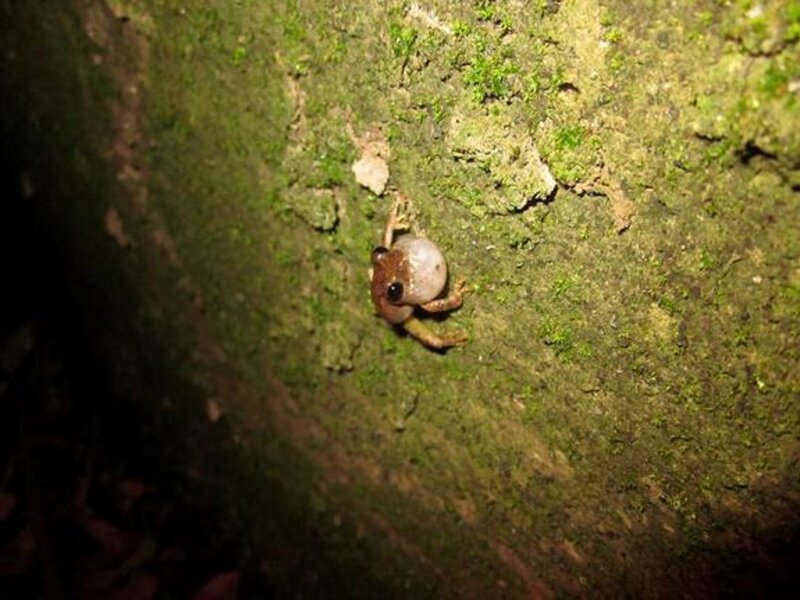Frogs use storm drains to amplify mating calls, say scientists
Loading...
Little tree frogs in Taiwan may get a boost from mankind during the mating season, according to new research suggesting concrete storage drains augment the amphibians' mating calls.
The idea that animals consider acoustics is not a new one. For example, scientists have found that the Spix's disk-winged bat in Costa Rica roost in leaves that help funnel sound to their ears. And Bornean tree-hole frogs tailor their calls to resonant with the hollows in tree trunks where they hide.
Nor is it unusual to find animals using human structures — think of pigeons roosting on window ledges instead of in rock cliffs. But concrete drainage ditches are completely alien to Mientien tree frogs (Kurixalus idiootocus), a species found only in Taiwan. The frogs are only about 0.7 to 1.5 inches (2 to 4 centimeters) long and breed between March and June.
"Concrete drains are miniature canyons, but are not analogous to anything in Mientien tree frog natural habitats," study researcher Y. Kirk Lin of National Taiwan University told Live Science in an email. "Therefore, it is interesting to find those frogs preferentially calling in the drains." [Freaky Frogs: 40 Cool Photos]
Calling frogs
Wen-Hao Tan, an undergraduate in Lin's research group, was the first to notice that Mientien tree frogs seemed to be congregating in the concrete drains alongside walking paths and roads.
"I went out with him, and noticed that indeed there seemed to be a lot more frogs in or at the edges of drains than in the nearby vegetative upland," Lin said. "We also noticed the calling sounds seemed to be louder in the drains."
To find out if the frogs might be getting an advantage from the drains' acoustics, the researchers recorded frog calls in the wild. They then observed frogs in the wild and recorded the sites where the frogs perched. Next, they placed a speaker in frequent perch sites and played back calls to a microphone above the ditch, approximately where female frogs gather to listen to male singing.
Louder and longer
The researchers found that far more male frogs were perched in drains than outside of them, with 1.64 calling frogs per square meter (10.7 square feet) inside drains, versus an average of 0.02 frogs per square meter in the surrounding vegetation.
The recording playbacks revealed that the drains increased the average power, maximum power and duration of the frogs' sounds, the researchers report today (June 4) in the Journal of Zoology. In short, they wrote, drains make the frogs' calls sound "louder and longer."
What's more, the researchers suspect that Mientien tree frogs choose the drains for their acoustic advantages. Tree frogs are able to survive away from water, so they aren't likely drawn to the drains for the wet environment. Nor are they nesting or searching for food there, Lin said. The frogs mate using something called a "lek" system, in which males gather in groups to call and females come by to browse for the perfect mate. Previous studies suggest that the location of the lek is not related to proximity to food, water or shelter.
The study did not, however, look at whether female frogs prefer drain-calling males to males perched in vegetation. That work is the next step, Lin said.
"Such experiments would tell us whether the drain-calling behavior increases or reduces that attractiveness of males," he said.
Follow Stephanie Pappas on Twitter and Google+. Follow us @livescience, Facebook & Google+. Original article on Live Science.
- The 12 Weirdest Animal Discoveries
- Album: Bizarre Frogs, Lizards, and Salamanders
- Animal Sex: 7 Tales of Naughty Acts in the Wild
Copyright 2014 LiveScience, a TechMediaNetwork company. All rights reserved. This material may not be published, broadcast, rewritten or redistributed.







